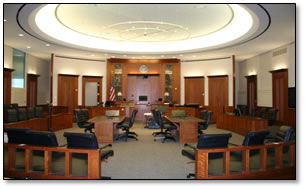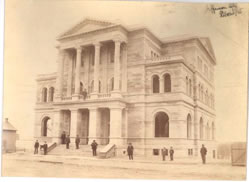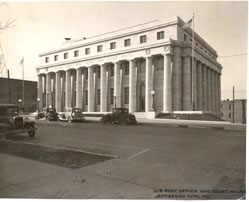Who is Christopher S. "Kit" Bond?
Christopher S. Bond is a sixth generation Missourian, born in St. Louis in 1939. He grew up in Mexico, Missouri. Bond graduated from Princeton University in 1960 and received his law degree from the University of Virginia, having graduated first in his class.
In 1969, Bond became an assistant attorney general under former U.S. Senator John Danforth. He was elected state auditor in 1970 and on January 8, 1973, he became the 47th governor of Missouri—the youngest governor the state has ever had.
Bond was re-elected to a second term as governor in 1980. Among his greatest accomplishments as governor was to take the Parents as Teachers program statewide. After his second successful term as governor, Bond continued his service to Missouri in 1986 in his newly won seat in the United States Senate. Missouri voters returned Bond to the U.S. Senate in 1992, 1998 and in 2004.
While serving in the U.S. Senate, Bond built a reputation as a statesman who advocated for a strong U.S. Military, improved care for our nation’s veterans and men and women in uniform and fought for economic security by protecting jobs from being driven abroad. Bond served on the Senate Select Intelligence Committee where he worked to give the Intelligence Community the tools to detect and disrupt planned terrorist attacks on America.
General Building Facts
- The Court House is named after former U.S. Senator Christopher S. “Kit” Bond and was dedicated on September 27, 2011.
- The project began in March of 1999 following a Congressional request to correct security and space issues in the existing court facility and to consolidate federal agencies in one building.
- The building contains 117,000 square feet and sits on a seven-acre tract that was part of the former Missouri State Penitentiary. The Missouri State Penitentiary, until it was closed in 2005, was the oldest prison west of the Mississippi River.
 The Court’s Seal is embedded in the terrazzo lobby floor. The inscription—LET JUSTICE FLOW LIKE A RIVER—was selected by local judges.
The Court’s Seal is embedded in the terrazzo lobby floor. The inscription—LET JUSTICE FLOW LIKE A RIVER—was selected by local judges.- Ground breaking was held October 24, 2008. Construction took just under three years to complete and the project was under budget.
- The building consists of four stories above ground and an underground level for secure parking.
- Kallmann, McKinnel and Wood Architects, Inc., from Boston, MA, was selected as the architect and J.E. Dunn Construction, from Kansas City, MO, was the contractor.
- The atrium has a green roof that uses plants and soil to help insulate and control rain water.
- The entrance to the Court House is designed to relate to the entrance of the historic Administration Building of the old Missouri State Penitentiary.
- The building has two perpendicular wings with a concave curved front entrance. The exterior is clad in limestone and granite.
 The building houses the United States District Court, U.S. Probation and Pretrial Services Office, U.S. Marshal’s Office, U.S. Attorney’s Office, Department of Homeland Security, Congressional Offices and Federal Protective Services.
The building houses the United States District Court, U.S. Probation and Pretrial Services Office, U.S. Marshal’s Office, U.S. Attorney’s Office, Department of Homeland Security, Congressional Offices and Federal Protective Services.- The building has four courtrooms. Each courtroom has an associated judge’s chambers and there is one additional visiting judge’s chambers.
- Every courtroom is equipped with state-of-the-art courtroom audio-visual and evidence display equipment.
- The Honorable Nanette K. Laughrey, U.S. District Judge, and The Honorable Willie J. Epps, Jr., U.S. Magistrate Judge, currently have chambers in the new Court House.

The U.S. District Court for the Western District of Missouri, located on the North side of High Street, met in this building from 1885 until 1934. The U.S. Circuit Court for the Western District of Missouri also met here until that court was abolished in 1912. The District Court moved to its next location directly across the street in 1934.

The U.S. District Court was then located in the U.S. Post Office which was dedicated in November 1934. The building’s appearance remains the same today. The Post Office continues to occupy the building.
Court House Tours
